I took a deep dive into the creative process and history of my Penelope headstock and was happy to see the interest in looking into other aspects of the guitar so naturally the next thing to dig into is tuner buttons. Tuner buttons are well worth taking a serious look at as they provide a great variety of aesthetic opportunities but, more importantly, they are one of the actual touch points a player has with a guitar. Done poorly they can be an annoying distraction. Done well they can add to the look of the instrument and comfort of playing for the artist. From very early on I started making my own custom buttons for these reasons. Long before my first post on AGF I was well into the process:
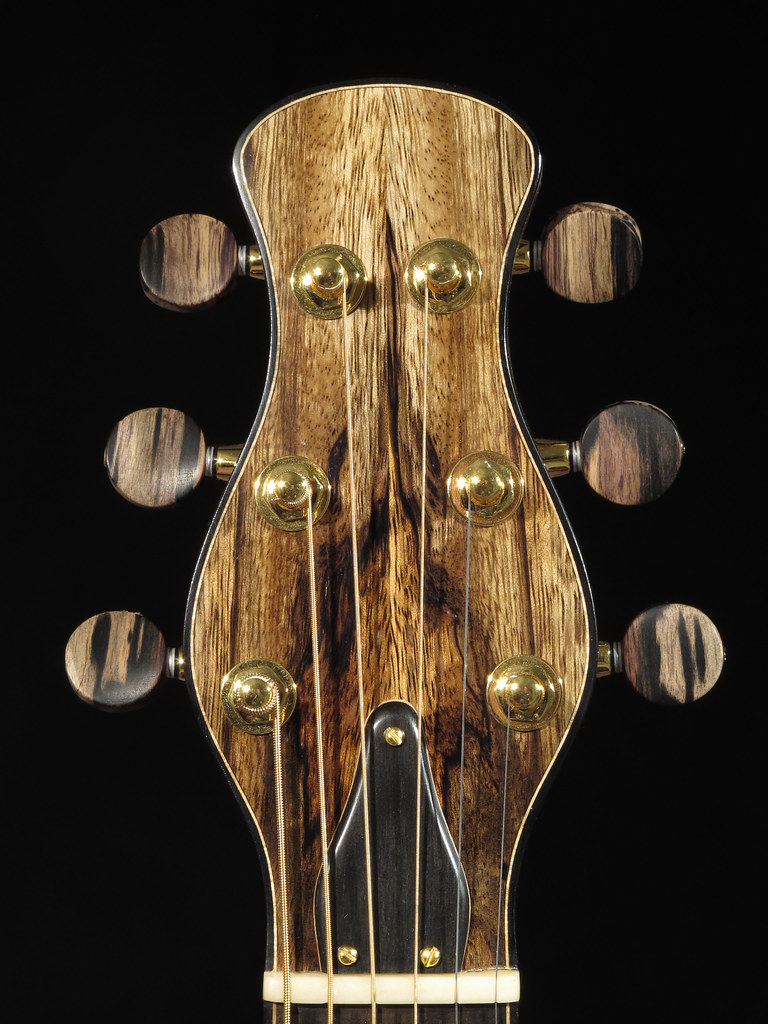
With all the curves of the Penelope headstock I thought round buttons were the best looking shaped. They were also easier to grab with a winder. Since I am making them I was able to consider what the would be the most comfortable.
Do you remember these?

They were popular a long time ago when I was in school. They are called worry stones. They are also called thumb stones, soothing stones, or sensory stones. They originated in ancient Greece, Tibet, Ireland, and multiple Native American tribes and still today are used to treat stress. They induce a bit a calmness when rubbed between the thumb and index finger like how you hold a tuner button. I figure It doesn't hurt to have that working for you while you struggle to get that G string tuned just right. So I indent the buttons for comfort.
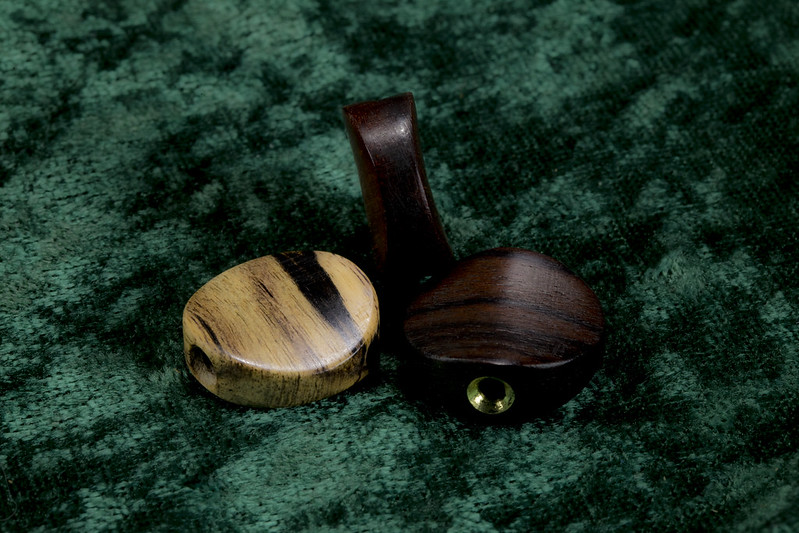
I do the buttons by hand. I draw a circle on the wood, rough it out with the band saw and sand it down to shape. Then I keep sanding with finer and finer sandpaper until it reaches a polished shine. It then gets a rub of fretboard oil. Being hand done there are naturally variances in thickness. When ready to mount them I sort them by thickness going from the thickest low E to the thinnest high E. The differences are slight but, with time the artist, maybe without realizing it, knows what string he is tuning without looking at the tuners. Yet, I have never had a client comment that their buttons aren't perfect matches.
I was off to a good start and could use a variety of woods for buttons and could select what I wanted for aesthetic purposes. The first picture I posted on AGF had my custom wood tuner buttons:

I have done sapwood capped Cocobolo:

A more subtle Black Ebony when the emphasis was on the abalone:
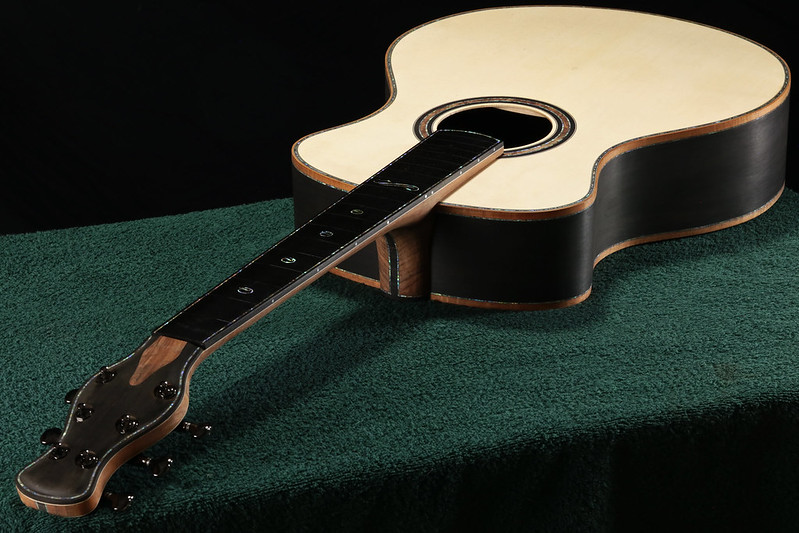
Rich looking BRW on BRW:

And I got contrast when I wanted contrast:
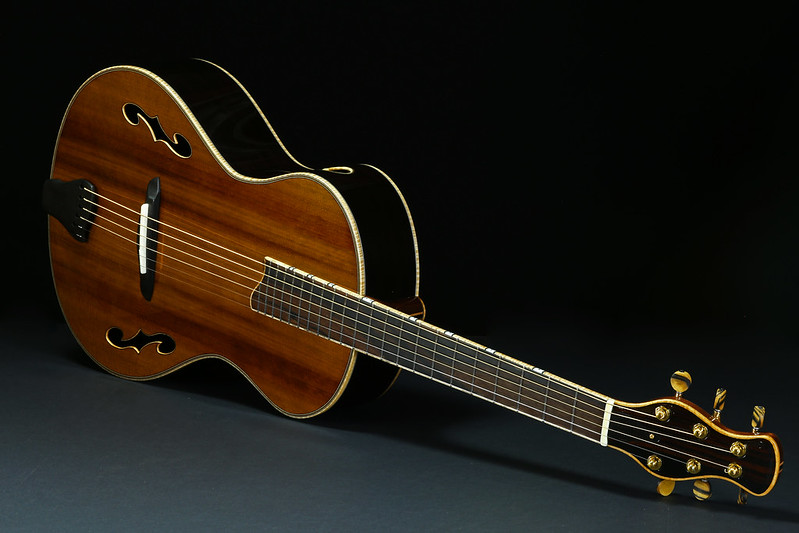
When I designed the more contemporary looking Greta GA model with it's straight sided headstock I started making oval knobs to go with it:
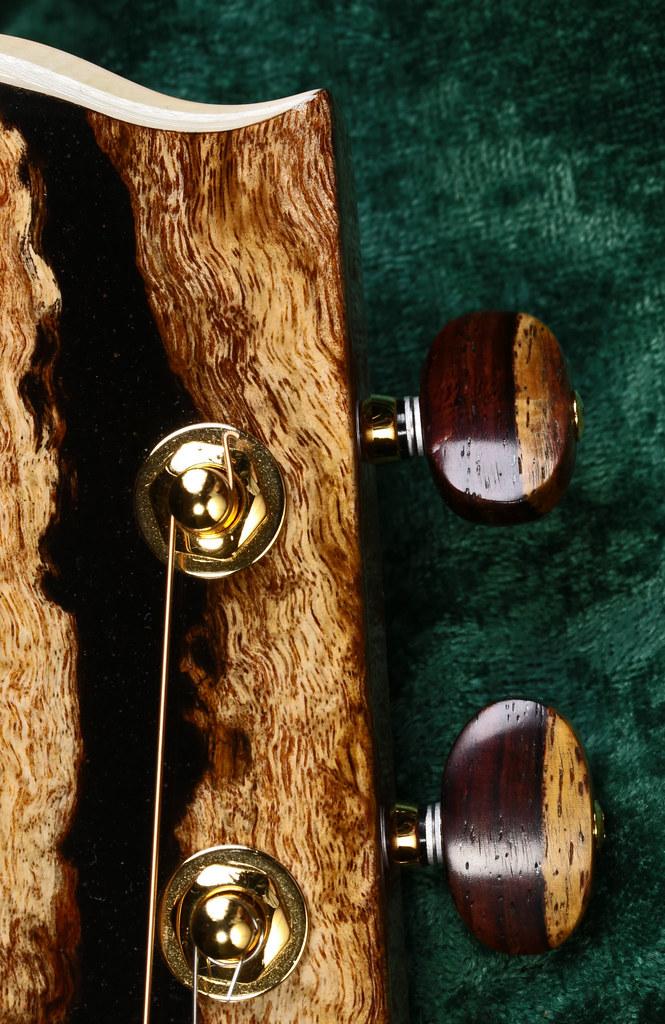
I was happy to find Black and White Ebony that was a good color match for this White Limba neck:
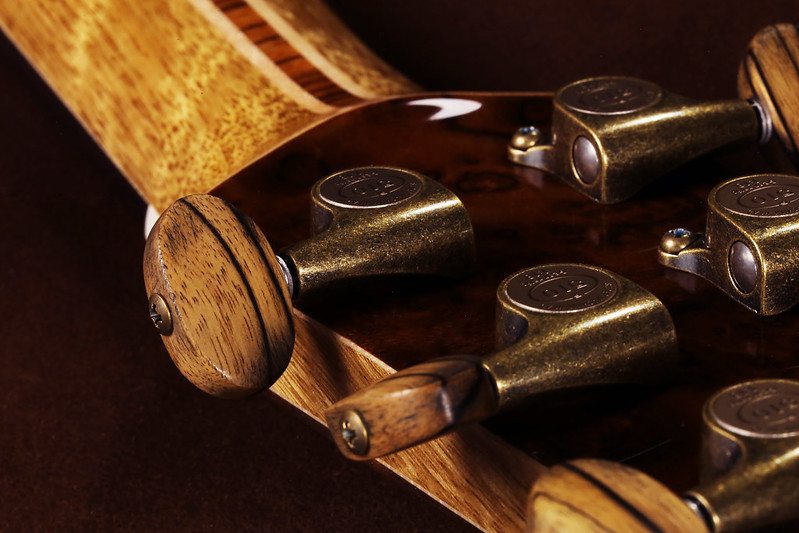
Well that's my 10 picture posting limit so I'll stop here and will pick up on part two later on.
Thanks for reading all that!
Mark